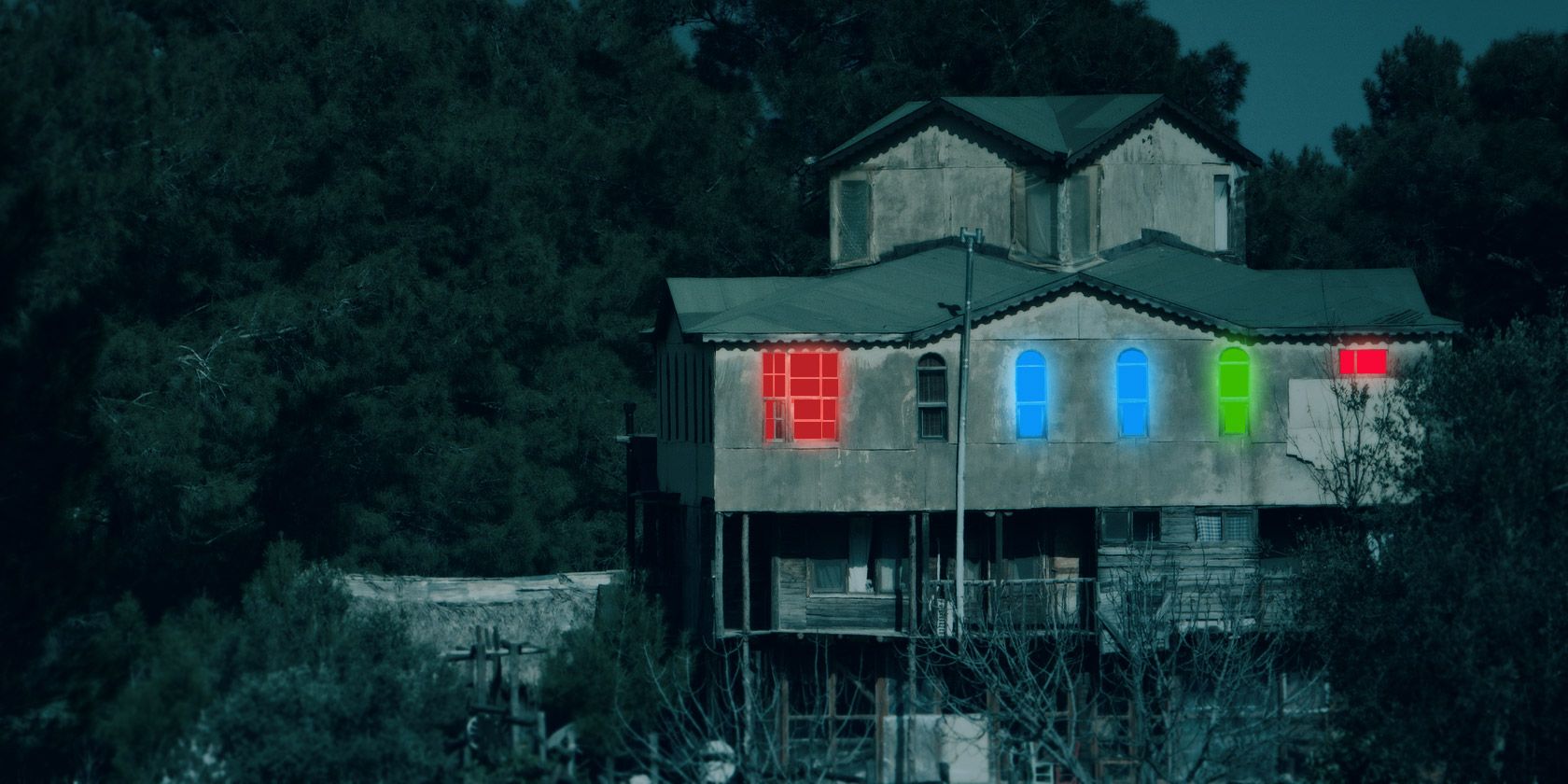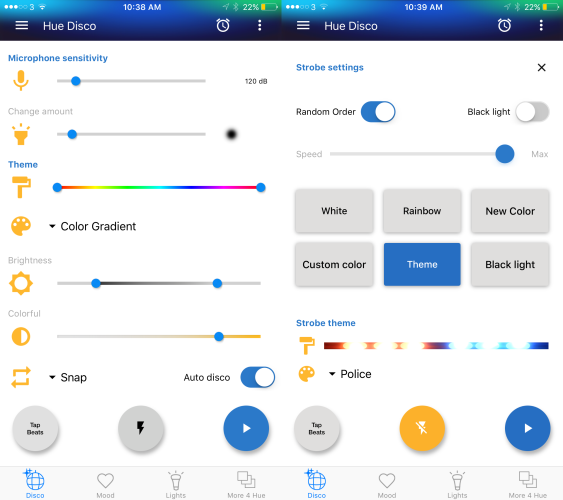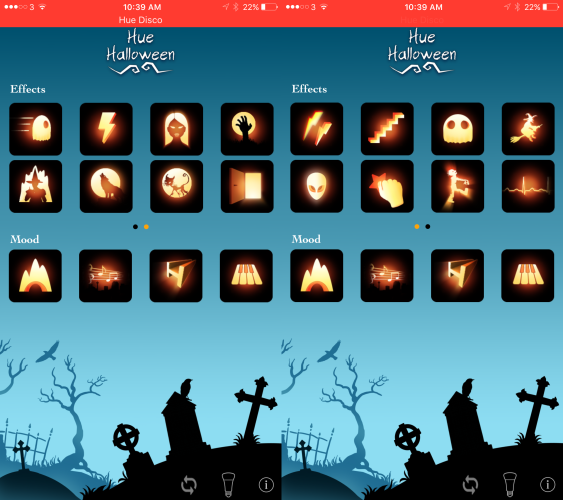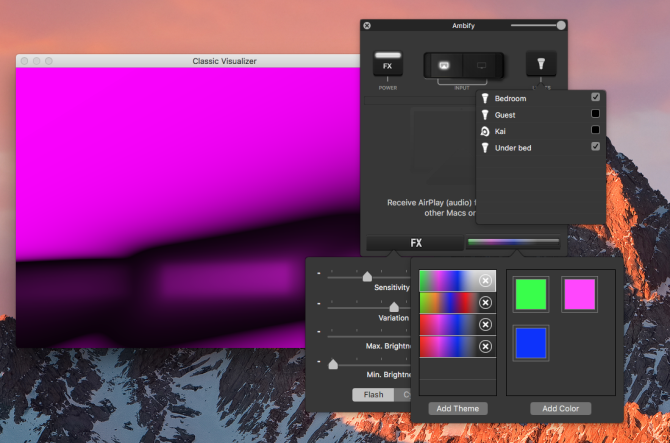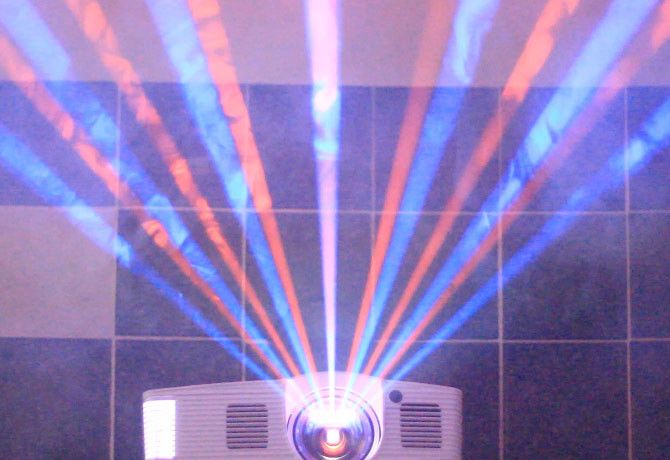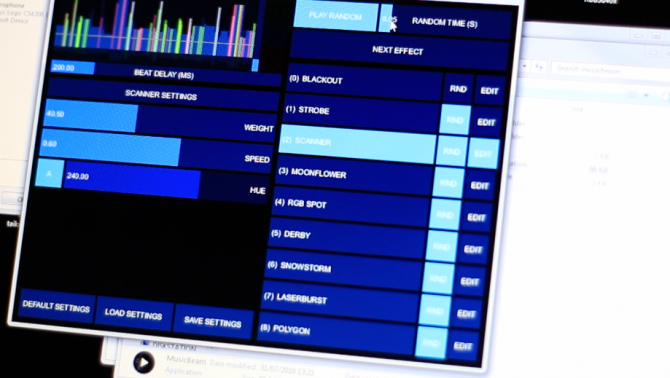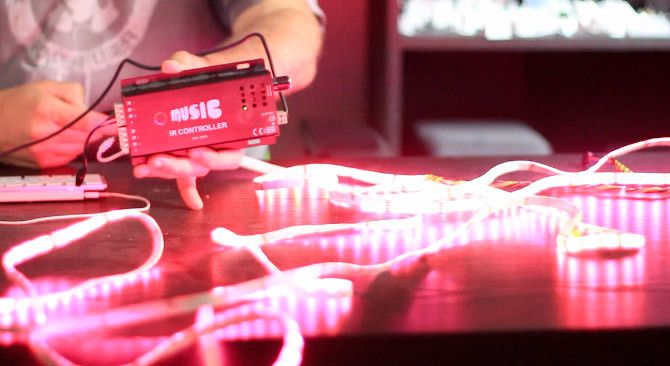Halloween is coming, which gives us all another excuse to spend money on new costumes, pretty lights, and scary smoke machines. Whether you're hosting a Halloween house party or want the coolest haunted house in the neighborhood, making those lights flash in time to music and sound effects is essential.
Here are five apps and some hardware that will make that process easy. Whether you own some Philips Hue lighting or some colored LED strips, we've found something to suit all. Be sure to check out the demo reel below for an idea of what effects each one is capable of.
The Easy Way: Philips Hue
There's a reason why Philips Hue smart bulbs are the leading brand of smart home lighting: their API is great, and they have a huge number of third party apps and even voice control from any iOS device. I've even shown you how to interact with your bulbs from an Arduino before, but there are a couple of great apps for Hue that'll sync in time to music and more. Remember, there are a variety of Hue lighting fixtures available -- not just standard plug-in bulbs. The Hue Go (CA/UK) is completely wireless with three hours of battery life, perfect for hiding inside a pumpkin!
Hue Disco (iOS and Android, $3.99)
Hue Disco runs on a mobile device and uses the microphone to listen to audio. This means no complex setup or audio routing. Just place it near the audio source, launch the app, select the lights to use in the display, and hit run. You can choose between a faster effect with more strobing, smooth transitions, or a mix of both. Color schemes can also be adjusted, if you want to restrict the display to only Halloween-esque hues.
In addition, there's a strobe only mode, enabling you to interrupt the musically synced transitions and just fire off a burst of strobe lighting. It's ridiculous fun, and can be used to great effect in a hallway, with each light flickering randomly.
When you're bored of music synced lights, Hue Disco has a special "mood mode" for gradually changing mood lighting, again with selectable color themes and transition times.
Pros:
- Can work with any audio with no setup, since it listens on the microphone.
- Manual strobe override.
- Feels very responsive.
- Highly configurable.
Cons:
- You'll need to dedicate a mobile to the task of running the light show.
Download -- iTunes | Google Play
Hue Halloween (iOS and Android, $1.99)
From the developer of Hue Disco comes this nifty little Halloween specific app. This isn't strictly for syncing to music, but it does give you a soundboard of scary Halloween sounds that sync up to your lights, and the effect is brilliant. Just connect your iOS device to your speakers, and you'll find a total of 20 sounds to use in your haunted house. The pack consists of 16 one-off effects sound like a creaking door or howling wolf, as well as 4 background mood sounds. The background tracks provide a great ambient backdrop while you can concentrate on manually triggering the really scary effects at the right moment.
On the downside, if your haunted house has other physical effects you need to control, it might be difficult to manually time everything correctly.
Pros:
- Simple, but very effective for haunted houses.
- Background tracks to keep up the scary ambience.
Cons:
- Manual control. You'll need to actually trigger the sounds.
- No integration with other systems.
Download -- iTunes | Google Play
Ambify (macOS, $10)
Ambify for macOS has similar configuration options to Hue Disco, but can work as either an AirPlay target or capture existing system audio. Unfortunately, microphone input isn't an option, which seems like an odd omission. In testing, I felt it was a little less responsive than Hue Disco, with more slow fading and less strobe effects, but this is subjective and probably something you should test out for yourself.
Ambify costs $10 to unlock, but the demo mode enables you to test it out and check compatibility for a few minutes before it introduces white noise onto the sound output.
Pros:
- Capture system audio or as AirPlay target from other Macs and iOS.
- Configurable options for sensitivity, variation, flash or fade, as well as colors.
- "Classic visualizer" for additional display output on the Mac (can be synced to a specific light).
Cons:
- Feels a little less reactive than other solutions.
- Capturing system audio may present problems.
- No option to listen on the microphone.
Download -- GetAmbify.com
Note that there is also an iOS version of this, though it has fairly bad ratings due to it's inability to work with Apple Music and other restrictions. If you use the Mac app as an AirPlay target, you can avoid this limitation.
Don't forget: you can also combine these apps, either by choosing which lights are used for which apps, or simply having light respond to multiple effects at the same time. You can have a constant flickering provided by the Hue Disco app, but overriding it with manual effects from Hue Halloween.
Great With Smoke: MusicBeam Virtual Laser Show (Free, Cross-Platform)
MusicBeam is a free, virtual laser for your Halloween house party. It's designed to be used with a projector and ideally a smoke machine, displaying simple shapes that are music reactive to emulate classic laser projections. It's a Java app, written using Processing, so you'll need the Java runtime installed. You'll need to set your projector as an extended display (to the right), not in mirrored mode.
If you have trouble with the executable, or if you're running macOS Sierra, which removed the ability to run apps with mismatched signatures, you'll need to run this via the source code in Processing. Ensure you have Processing 3.0+ installed, then open the
/source
directory from the download, and drag the
MusicBeam.pde
into Processing. You'll also need to install the third party libraries named
controlP5
and
minim
from the Import Library menu option.
From the main display you can set and forget a completed automated mode, or manually configure the mode and options.
No Smart Lights? Use RGB LED Strips
Hue Bulbs are certainly a lot of fun, but quite pricey to buy new. As an alternative, you can buy RGB LED strips for as little as $5/meter. They lack any sort of smart home integration, but you can control them from a Harmony system once it's learned the remote codes. For simple music syncing you can purchase a separate RGB music controller for around $25. That particularly model can drive up to 20 meters or 10 amps worth through two channels, though you'll need to pair it with a suitable beefy 12V power supply.
There are limited settings compared to any of the apps we've mentioned, but it does have either a strobe or fade mode, and a sensitivity dial. It can still be used non-musical control with the included remote, so it can completely replace your existing LED controller.
Pros:
- Significantly cheaper than equivalent brightness Hue strips.
- Hardware based music syncing means your mobile device is free to control other things.
- Runs independently.
- Strobe or transition effects, plus sensitivity dial.
Cons:
- No off-the-shelf smart home integration.
- Not much you can configure.
The Professional Way: DMX
Professionals use the DMX protocol to control intelligent lighting fixtures in clubs, concerts and other live events. With relatively low-cost USB to DMX adaptors, nowadays anyone can make an orchestrated lighting show thanks some open source software on their PC. I've shown you how to do this before, and the principle remains the same.
You will of course need DMX compatible lighting fixtures -- but you can get a budget moving head fixture for less than $100, or buy DMX controllers for RGB strips (~$15) as I used in the video above. Professional devices cost a lot more of course -- the kind you see in a music concert will cost upwards of a few thousand dollars each.
If you've seen the viral videos of Halloween and Christmas lighting synced perfectly to a particular music track, it's done with DMX and takes many hours of intricate sequencing by hand. DMX also allows precise control of relays for physical effects, not just lighting. The solutions we've outlined so far are automated, but the most impressive displays take a lot more work!
Don't Forget!
A smoke machine adds greatly to any haunted house effect, and typically comes with either a wired or wireless remote. Hacking a smoke machine into an automated smart home system is a little more complex (you can't just add a smart power socket), but if the remote uses 433mHz signal, this tutorial will give you OpenHAB control.
What will you be lighting your haunted house with this Halloween?

